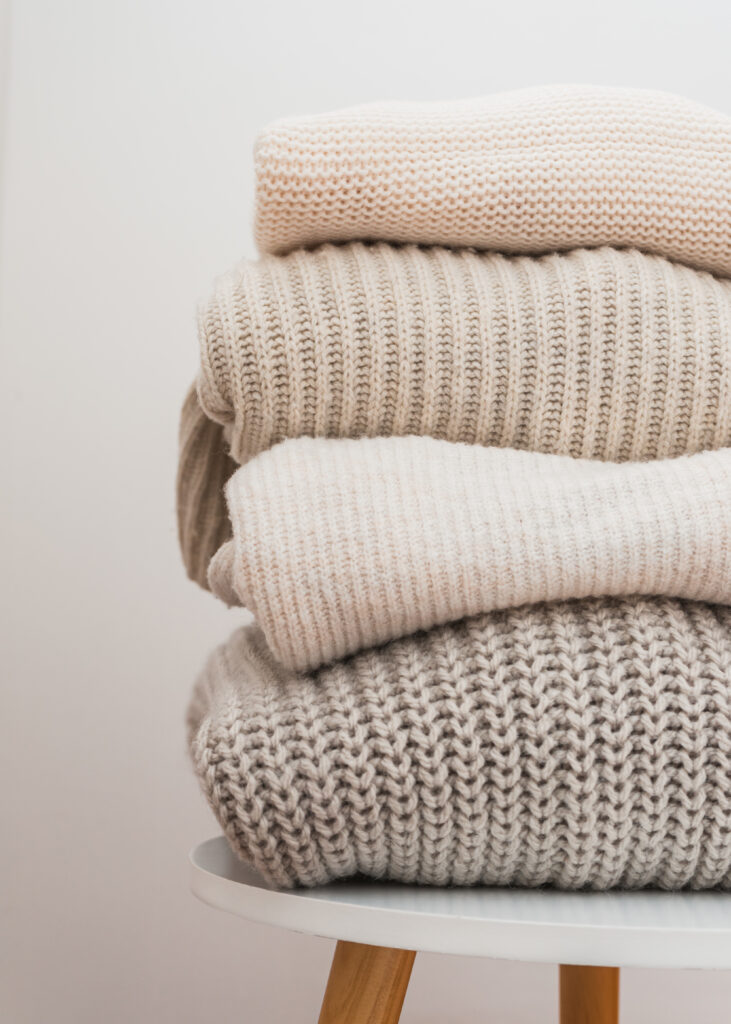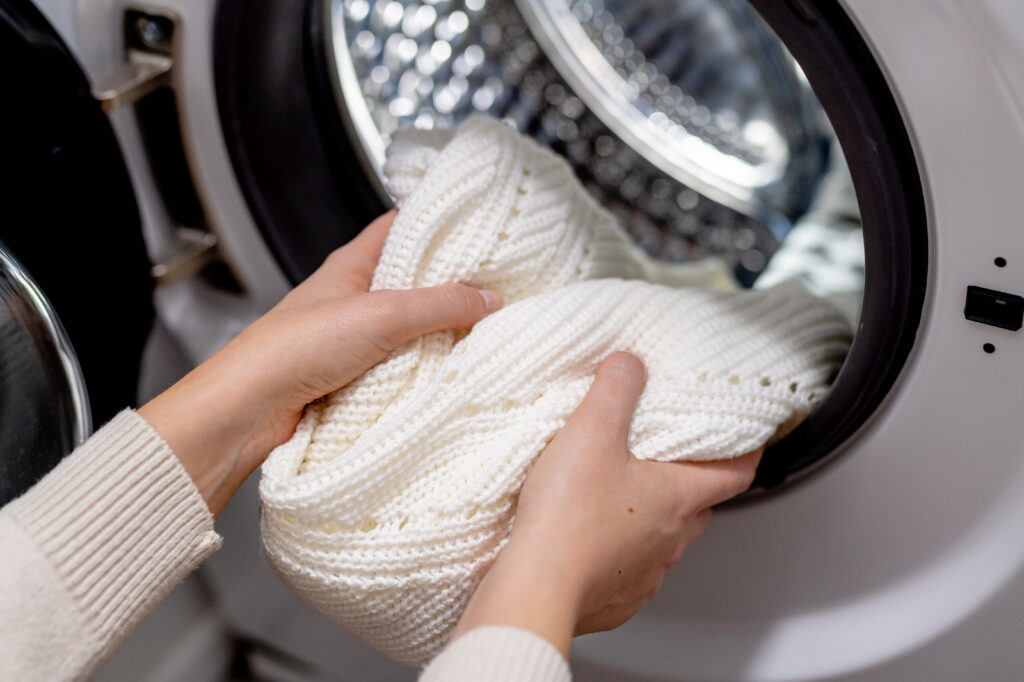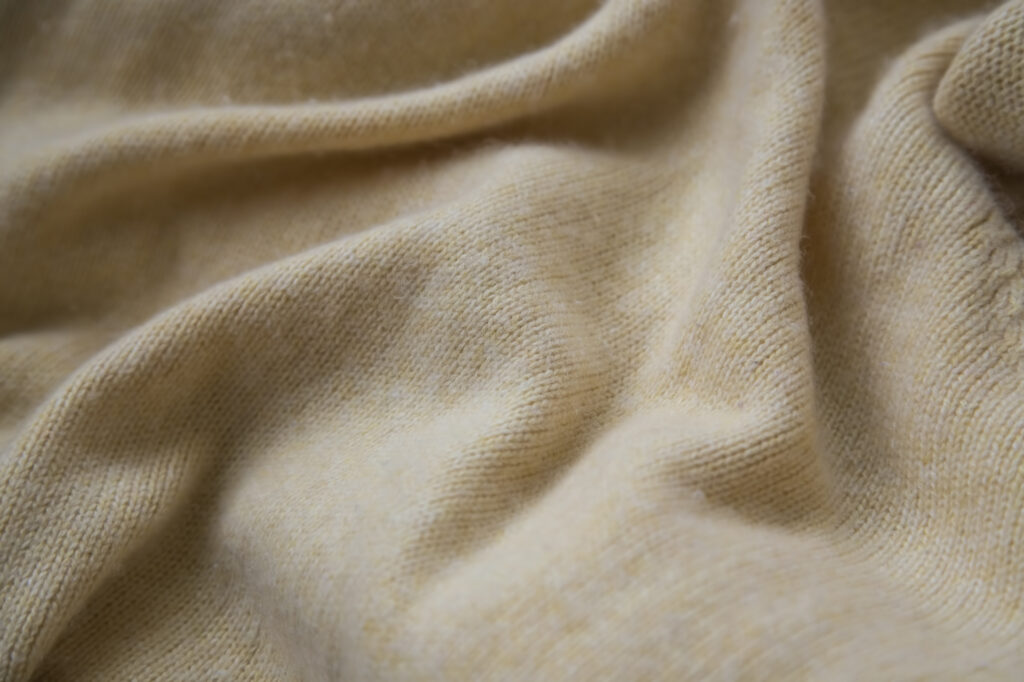
During the cold winter months, consumers who want an elevated look often tend to seek out traditional luxury fibers such as cashmere, Merino wool, fur or other animal fibers. While often overlooked, cotton is a natural fiber that’s making its mark on the fashion industry by offering a comfortable, durable and affordable alternative, giving brands and designers new options for high-end winter wear.
One of the most common winter wardrobe items for both men and women is the sweater. The sweater can be traced back to the 15th century when fishermen and sailors wore the first woven wool sweater-like garments. They needed to stay warmer and drier when out to sea. Fast-forward to the 1890s when U.S. athletes wore “sweaters” for protection from the cold before and after athletic competitions. [1]
Today, the sweater has evolved into a garment that extends well beyond fishermen, sailors, and athletes, as it offers a wide variety of functions, colors, patterns, and styles. Typically, Merino wool and cashmere are considered the most “luxury” of fibers used to craft stylish sweaters, as they convey an elegant look while also giving warmth, softness, and comfort. Luxury sweaters can be difficult to clean and may even require specialized combs or dry-cleaning practices (which leads to further expense). This is where cotton can save the winter day.
Sweaters made from cotton possess inherent durability, while offering comfort, warmth, breathability, and versatility. Cotton sweaters are also less expensive, and much easier to clean, but tend to be misunderstood when it comes to luxury and style.
“So many people look to cotton as that daily wardrobe staple, but they forget cotton can be luxurious as well. With cotton, designers are only limited by their imaginations,” says Jennifer Lukowiak, Director of Supply Chain Marketing at Cotton Incorporated.

“There are so many options with this natural fiber. You no longer have to invest in expensive garments to achieve a fashionable look and stay warm in the winter. This is great news for today’s consumers who live complicated, busy lives, and just don’t want to put a lot of effort into laundry and caring for luxury garments that could be easily damaged.”
Transforming Cotton Fiber for a Luxurious Look & Feel

According to Lukowiak, when working with cotton to create a sweater, it’s all about yarn size, construction, and drape. This is typically what makes other fibers more appealing for luxury, but cotton can certainly play in this arena as well. Lighter-weight cotton sweaters made from extra-long fibers, which are often labeled as Pima cotton, can create a super elegant look. These sweaters have a finer drape to them and more smoothness. Drape isn’t necessarily associated with a specific yarn construction – it’s how the fabric lays and gives the garment more movement when against the body. A “chunkier” cotton sweater made from bigger, thicker yarn has a more casual vibe.
The other thing to consider, says Lukowiak, is mercerized cotton yarn. Mercerization is a special treatment process that gives the cotton yarn a bit of a sheen, lending itself to a very lustrous appearance, which can elevate a cotton sweater to look more elegant.
“Our recommendation to brands and designers is to learn about the different fiber options and yarn gauges,” adds Lukowiak. “Designing sweaters is very different from designing other wardrobe items. It’s not necessarily about sourcing a fabric, it’s about sourcing a yarn to create the fabric, which is a different way to think about product development. My advice to sweater designers is to understand what yarn gauge means to the end product.”
CottonWorks™ Supports Designers & Product Developers
The CottonWorks™ website provides a wealth of educational opportunities for designers and product development teams that can help with learning more about how to create any end product, including sweaters. Additionally, knowing the target audience helps.
“It’s a cost metric, too,” adds Lukowiak. “Who are you selling to? What is your target price for that product? If you are designing in cotton, you’ve got a lot more flexibility. Cotton sweaters are less expensive to create, and much easier and less expensive for wearers to clean and maintain. But it’s important to note that they can still be luxurious as well.”


The Many Benefits of Cotton Sweaters
Because of cotton’s durability and strength, cotton sweaters typically can withstand numerous home laundry cycles without wearing out, and also do not tend to snag or pull as easily as Merino wool and cashmere. Therefore, garment wearers can count on their cotton sweaters for several winters in a row, not to mention relying on them throughout the everyday challenges of life.
“People’s lives today are just different; there’s a lot of multi-tasking. Some people are working from home, some people are running from place to place,” says Lukowiak. “Overall, I think people just want to be comfortable. They might have one or two of those elevated and traditionally ‘luxury’ pieces in their closets, but as an everyday go-to that’s stylish, and can wash easily after encountering a child’s sticky fingers or a spilled coffee, cotton is the right choice.”
Because it is a natural fiber, cotton offers additional benefits that can be appealing to designers and consumers as well. Grown from the earth, cotton is part of an industry that is committed to sustainable farming and manufacturing practices [2]. Additionally, cotton is hypo-allergenic, as opposed to fibers from animal fur that can be uncomfortable or irritating to the skin. Not only that, cotton sweaters can be enhanced with many of Cotton Incorporated’s performance technologies, such as STORM COTTON™ technology and TOUGH COTTON™ technology. These technologies make garments water-resistant and water-repellant, which can give any knit sweater an advantage. The sweater is warmer and drier during winter precipitation, and it can even repel that spilled morning coffee.
“We are starting to see a nice shift with luxury brands, in terms of how they are understanding the benefits of designing with cotton and adding cotton to their lines,” explains Lukowiak. “Brands want that natural fiber story, and cotton dovetails perfectly right in. Additionally, cotton can blend well with other luxury fibers. For example, we’ve seen some cotton/cashmere blends that are lovely and make for easier maintenance and care. Again, it’s that fine yarn gauge that allows a cotton sweater to drape beautifully and look more luxurious – but it’s still cotton, with all its wonderful features and benefits.”
Style Ideas from a Cotton Fashion Expert
Of course, Lukowiak is an expert herself at styling with cotton. She enjoys thinking outside of the box to find different ways that cotton and cotton sweaters can enhance any winter look.
“Cotton is ideal for layering,” says Lukowiak. “Pairing a cotton cardigan with a blazer, or a cotton sweater vest with an oversized blouse can provide an extra level of sophistication. Right now, I have a beautiful cotton crocheted sweater dress in my closet that’s perfect for more formal occasions. But for a casual look, I’ll always favor the classic look of a chunky sweater paired with jeans and boots.”

Jennifer Lukowiak is the Director of Supply Chain Marketing at Cotton Incorporated
1. Britannica.com: Arts & Culture: Sweater. https://www.britannica.com/topic/sweater
2. Cotton Sustainability. https://www.cottoninc.com/about-cotton/sustainability/